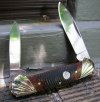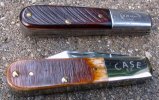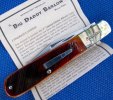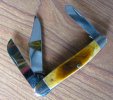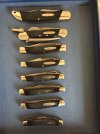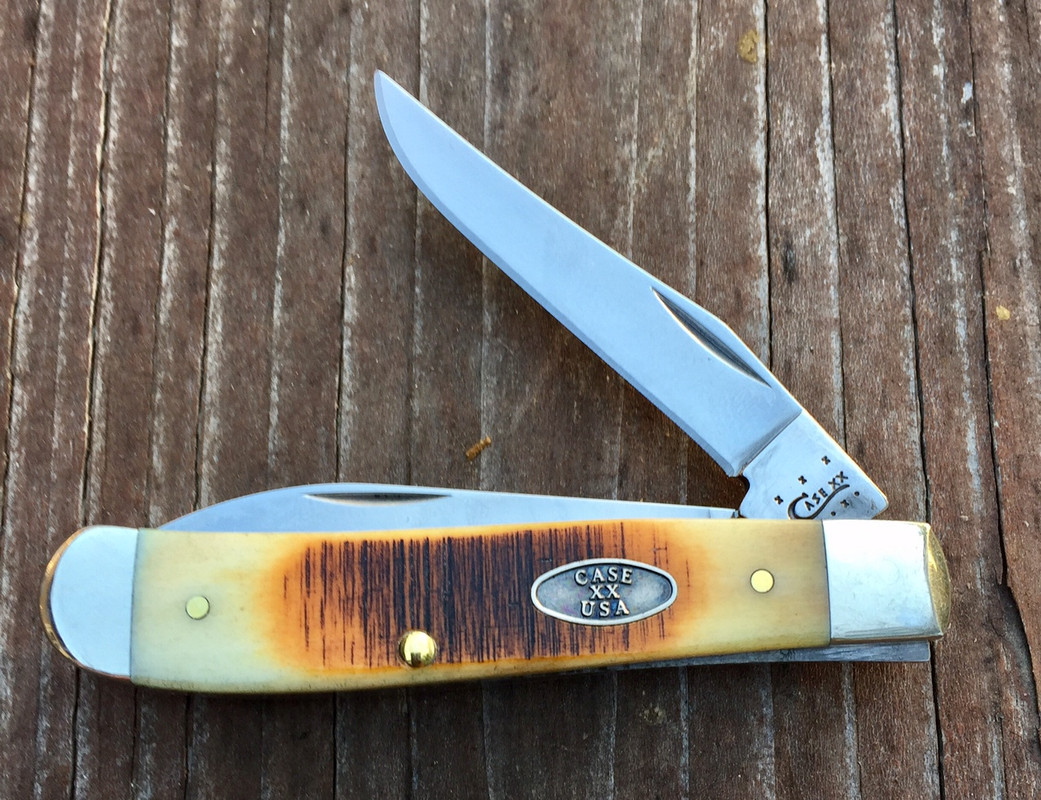Good question. I guess traditions change (or is that an oxymoron?)

I always assumed (and we know the risks of assuming) that the sawcut marks on old knives were actually the marks left by the saw when the bone was cut into slabs for handles. These marks might be left on the cheaper knives, like Barlows, rather than finishing by either jigging to imitate the texture of stag, or to polish smooth. When companies switched to Delrin, they molded the material with a sawcut texture to imitate the bone slabs that people liked and were used to.
If you look at the covers on this Camillus, and compare it to other examples, you can see the exact same irregularities in the grooves because they are from a mold, rather than having been cut by a saw:
What I've been wondering, is if the sawcut texture on knives made today, like this Case Barlow, are actually made by the cuts of a saw, or are merely another jigging pattern applied to flat bone. The direction of cuts doesn't have that diagonal curve that the old ones do. In the New Case Barlow thread, there's quite a variety of cut textures going in all different directions, and some that look more like parallel jigged lines than sawcuts.
At any rate, I agree with you, and if Buck ever offered knives in their 300 series with black sawcut bone, imitating the sawcut Valox handles that were designed to imitate sawcut bone, I'd have to buy some.





